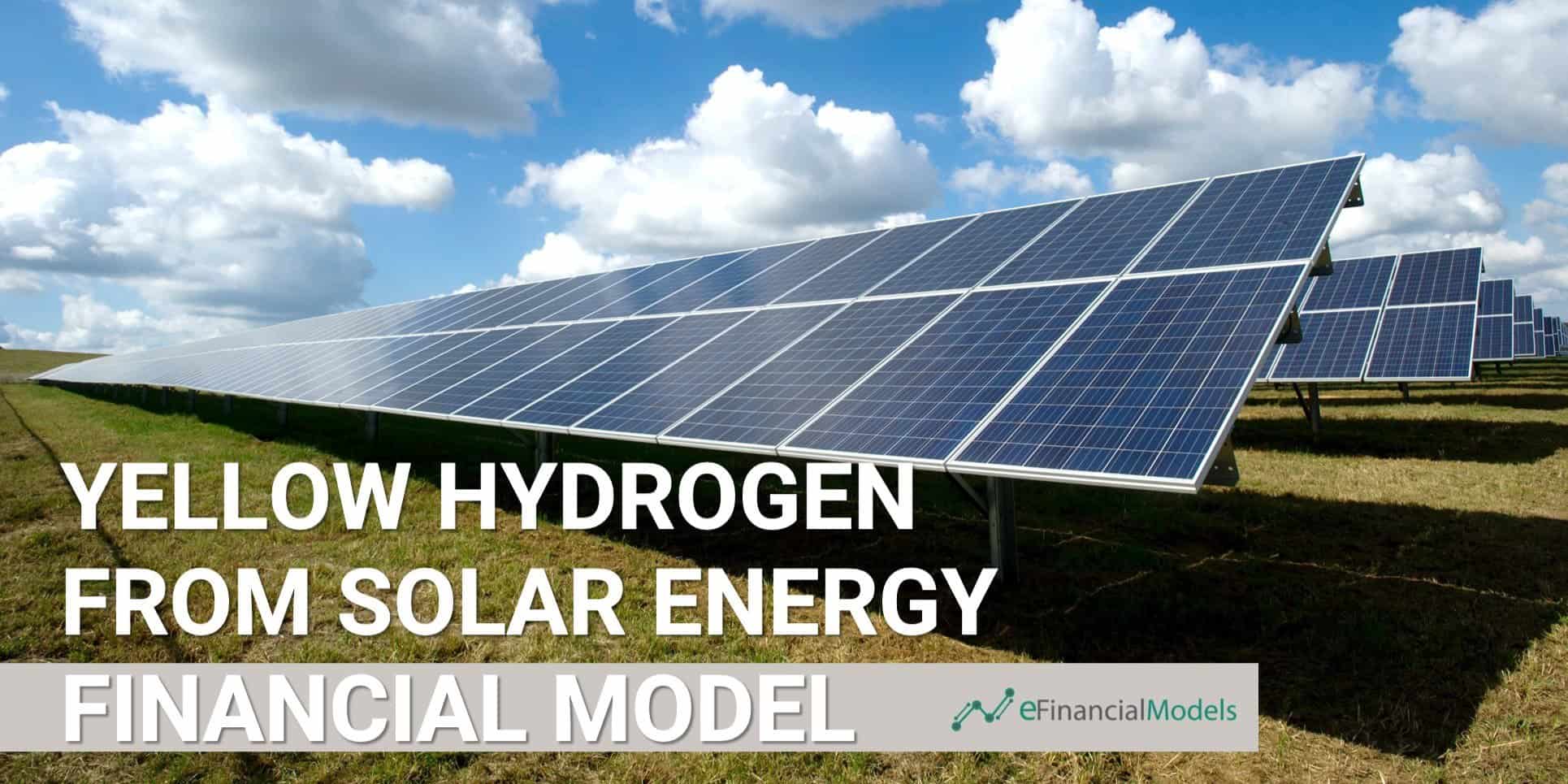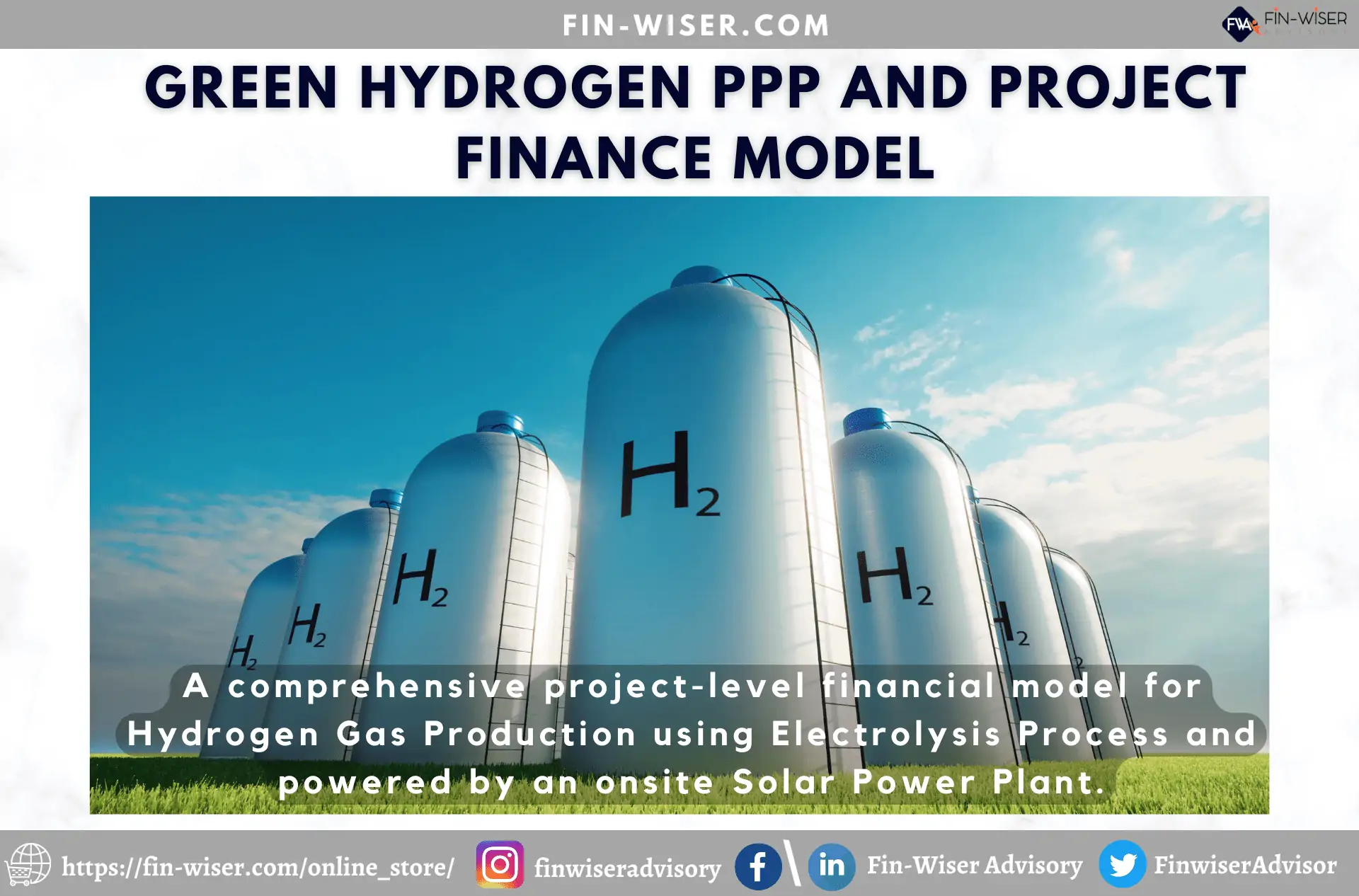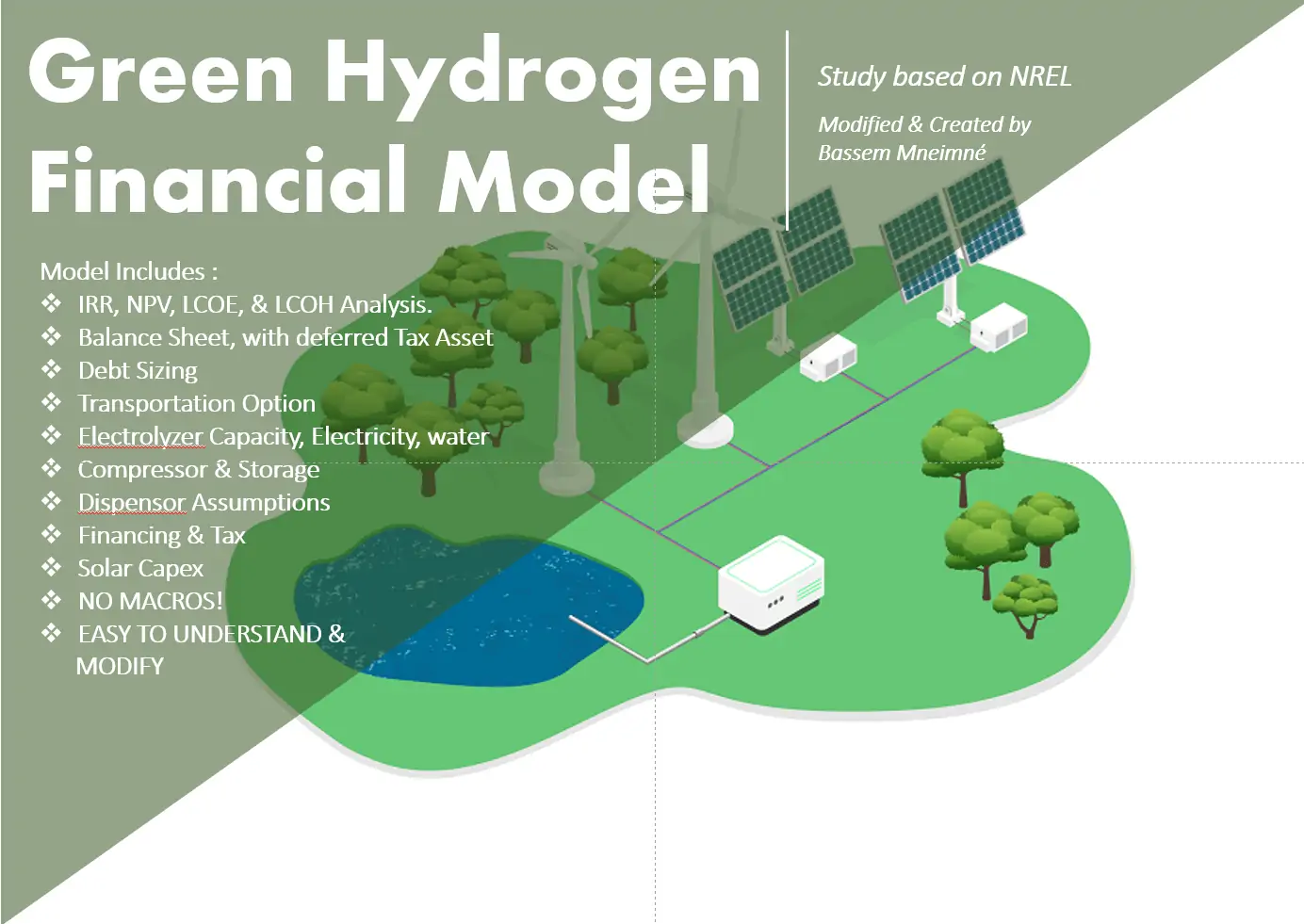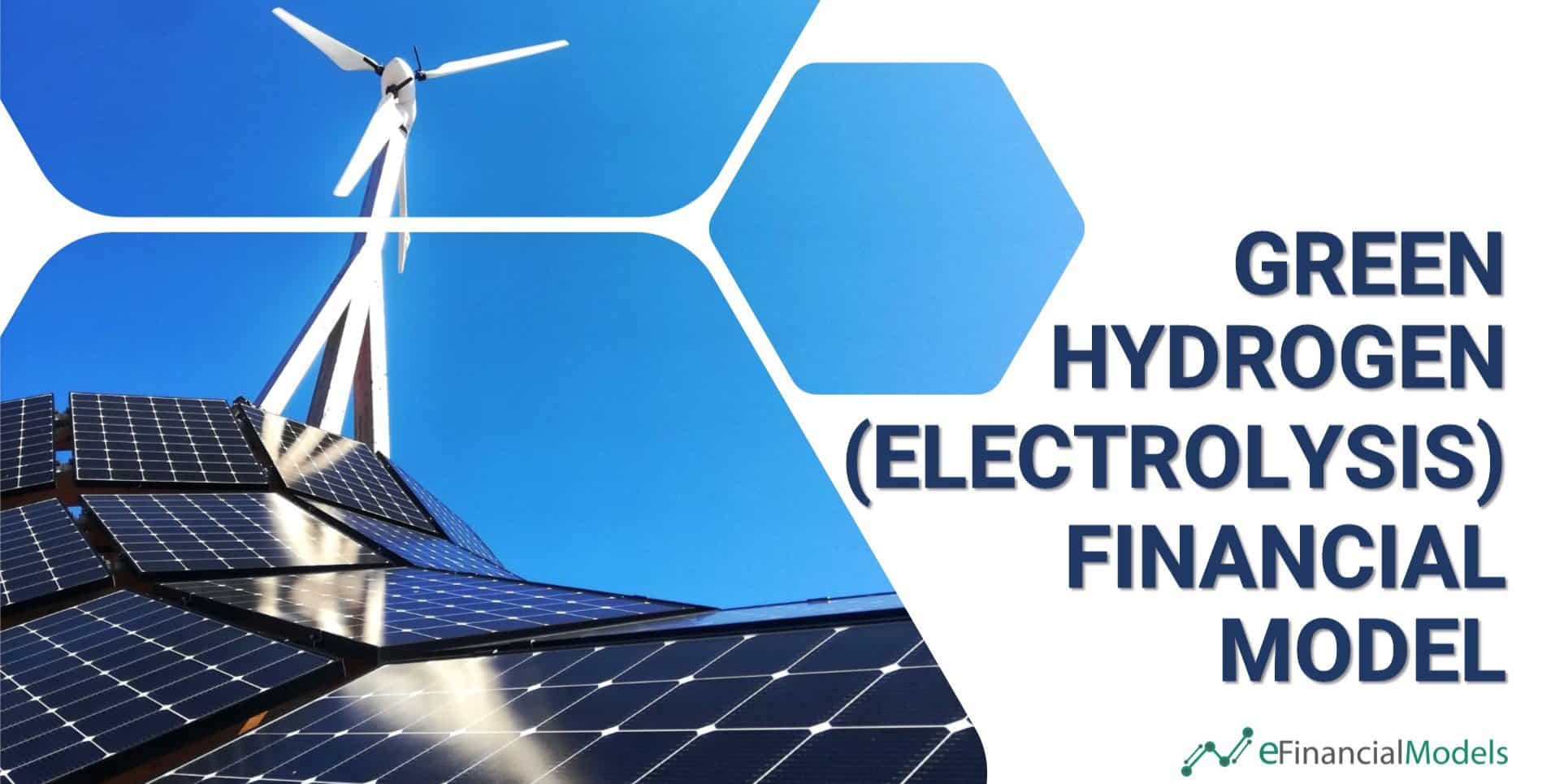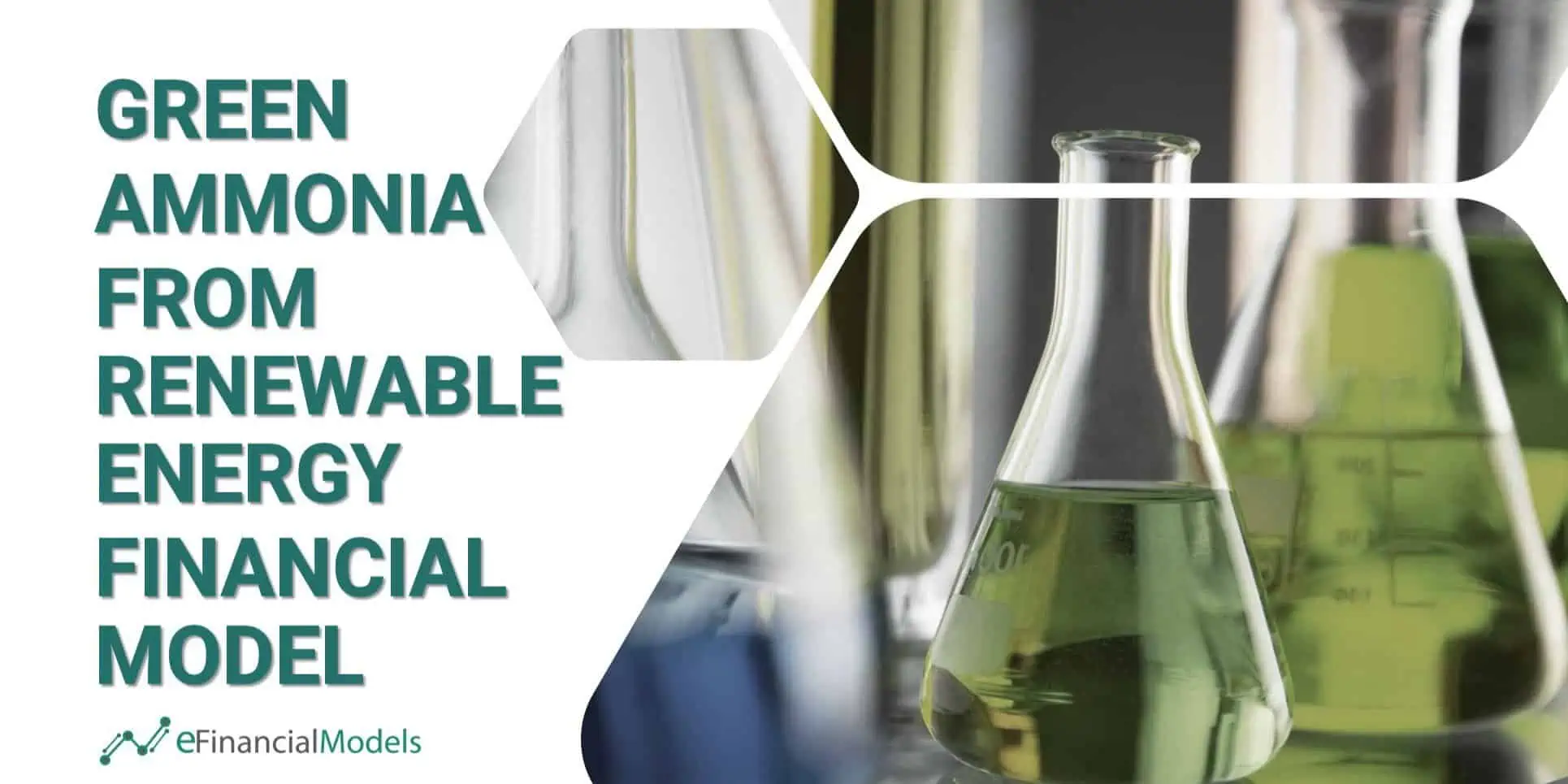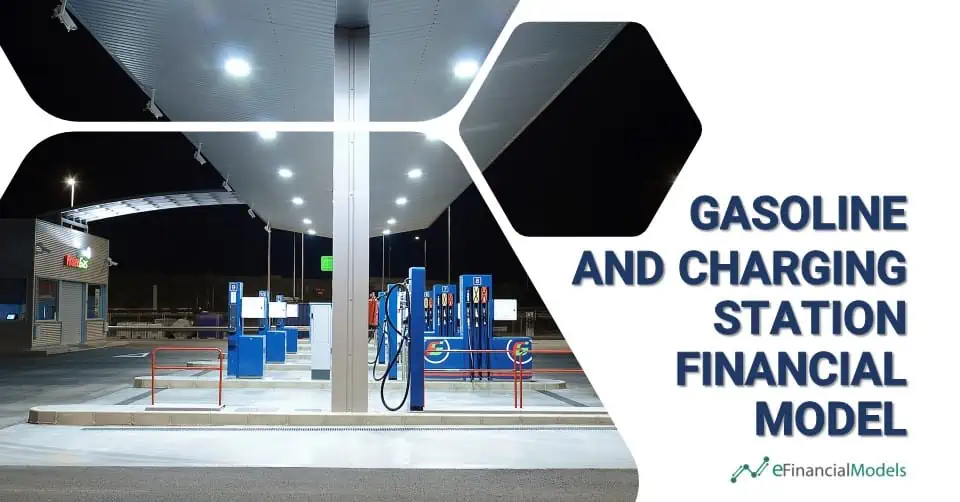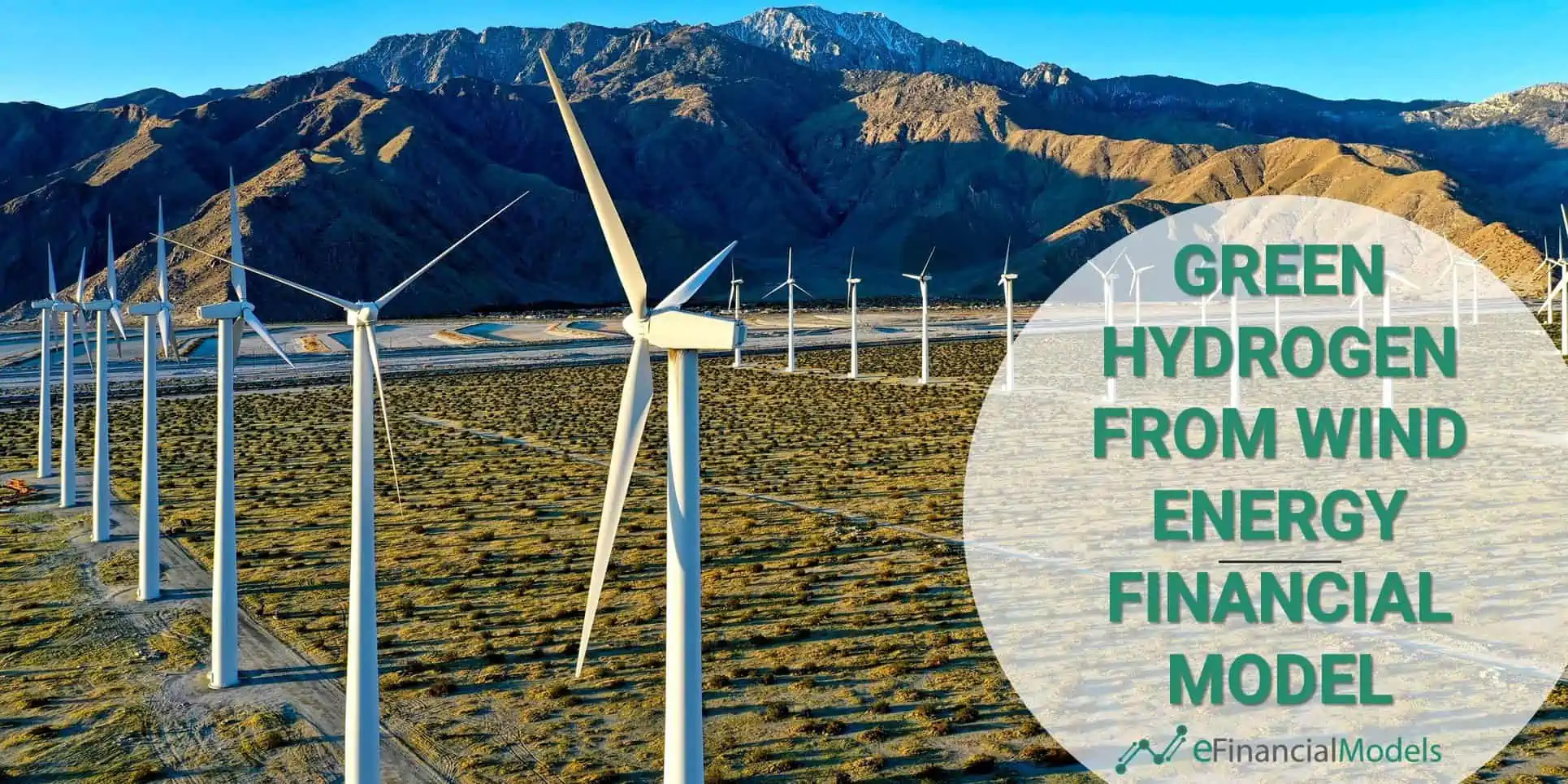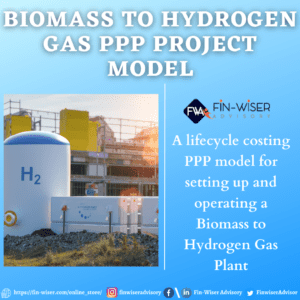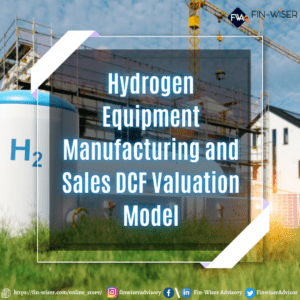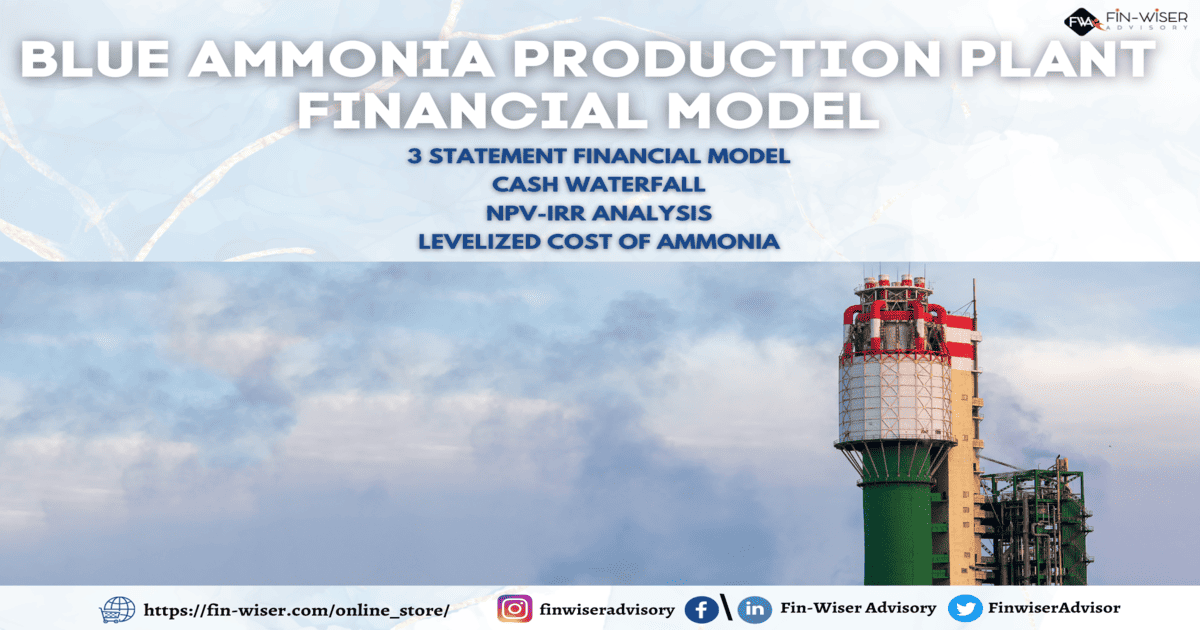Blue Hydrogen Production Financial Model
The objective of this financial model is to develop a comprehensive business plan of 40 years forecast to analyze the financial feasibility and profitability of the production of Blue Hydrogen.

Based on bottom-up assumptions, planning begins by determining the blue hydrogen plant’s daily design capacity, industrial natural gas, electricity, and water consumption. Other key assumptions include the start of the project operations, tax assumptions, uses and sources of funds, and debt financing. These assumptions are then translated into a detailed 40-year financial plan that allows the business owners and management to see how the business should perform from a financial perspective over the following years.
This financial model template is presented in various charts and tables that allow an easy understanding of the feasibility of blue hydrogen production. Calculations of the relevant financial ratios and financial metrics (such as IRR, Payback Period, NPV, and Levelized Cost of Blue Hydrogen per kg) and a debt schedule are also included.
What makes this Blue Hydrogen Financial Model Template Unique?
The following are the reasons why you should choose this template for blue hydrogen production startups:
- Units and Labels: Installed electricity capacity can either be MW or kW, and the label of Hydrogen type changes between Blue or Grey Hydrogen, depending on the production method.
- Carbon Capture and Storage Unit (CCSU): Determining if production will require CCSU will affect the capture end emission of Greenhouse Gas.
- Levelized Costs of Blue Hydrogen: This allows users to understand the levelized blue hydrogen cost per kg or ton at net present value.
- Advanced Tax Models: The Blue Hydrogen plant can potentially benefit from Tax advantages. The model includes an advanced tax model to consider the effect of various possible tax incentives for such plants.
- Detailed Financial Plans: The spreadsheet is designed logically, outlining the calculations of revenues and costs, which adds to the transparency and understanding of the model.
Blue Hydrogen Business Model Template Structure
The financial model is structured with instructions and formulas that are simple and easy to follow, which allows users to run simulations by varying the input assumptions. The elements of this financial model template are enumerated below:
Instructions and Terms contain the cell color codes and the terms and abbreviations used.
Executive Summary and Detailed Summary present the charts and graphs to understand the business plan for Blue Hydrogen better and to answer significant questions such as:
- Is the production of blue hydrogen profitable?
- What are the blue hydrogen production costs?
- How should blue hydrogen pricing be?
- What is the volume of produced blue hydrogen?
These spreadsheets include a 10-year summary of the following:
- Projected Blue Hydrogen Production Financial Statements overview – Income Statement, Balance Sheet, and Cash Flows Statement.
- Levered and Unlevered Free Cash Flows calculating key financial feasibility metrics such as the Internal Rate of Return (IRR), Payback Period, Net Present Value (NPV)
- Uses and Sources of Funds and Debt Financing
- Greenhouse Gas Capture and Emission Summary
- Blue Hydrogen Production Process Efficiency
- Lifetime Profit Distribution and Cash Flows
- Investor Summary
- Levelized Cost of Blue Hydrogen per kg
Assumptions that will translate this financial model into a business plan for Blue Hydrogen production:
- General Settings
- Currency
- Constant Maximum Hours and Days per Year
- Project Details – Name, Location
- Project Timeline – Blue or Grey Hydrogen Production Operation Years and Plant Lifetime
- Net Working Capital
- Inflation and Price Escalation
- Tax Assumptions – General and Advance Tax Model
- Blue Hydrogen Plant Assumptions
- Blue or Grey Hydrogen Production Method
- Carbon Capture and Storage Unit (CCSU) Option
- Blue Hydrogen Plant Production Capacity
- Capacity Utilization
- Industrial Natural Gas Consumption
- Electricity and Water Consumption
- Price for Blue Hydrogen and Other Income Assumptions
- Direct Costs of producing Blue Hydrogen
- Employee Positions and Expenses
- Operating Expenses
- Capital Expenditures, CAPEX Schedule, and Maintenance per year
- Greenhouse Gas (GHG) Capture and Emission
- GHG Emissions Pre Capture
- Removal Efficiency
- Blue Production Process Energy Efficiency
- Energy Inputs – Feedstock, Utility, and Carbon Sequestration
- Energy Outputs – Blue Hydrogen and Byproduct
- Uses and Sourced of Funds
- Cash Reserve and Net Working Capital
- Debt Financing Schedule
- Loan Terms
- Repayment Schedule – Calculated or Manual
- Interest – Cash or Accrued
- Investors
- Equity Ownership and Investment Percentages
- Development (Phase 1) and Buy & Hold (Phase 2)
- Dividend Payout Assumptions
The Operating Model worksheet contains the operational forecasts for producing Blue or Grey Hydrogen:
- Blue or Grey Hydrogen Production Volume
- Greenhouse Gas Capture
- Pricing and Revenue
- Costs to produce Blue or Grey Hydrogen – Direct Costs, Employee Expenses, and OPEX
- Fixed Assets Schedule – Initial CAPEX, Spending allocation, Maintenance, and Depreciation
Monthly Budget Allocation is prepared to have a detailed assessment of the financial feasibility of the blue hydrogen plant. This five-year monthly budget is formulated to start calculation from the selected first target year and operating month of the blue hydrogen production process. Using the monthly budget, users may distribute the monthly production target, annual revenue, and costs for the months that occurred using percentages. Also presented in this spreadsheet are the calculations of blue hydrogen production profit margins and the presentation of Monthly Free Cash Flows (Unlevered and Levered).
Financials contains the comprehensive calculations of the 40-year financial forecast planning and feasibility of the Blue or Grey Hydrogen Production:
- Financial Statements – Income Statement, Balance Sheet, Cash Flow Statement
- Financial Ratios and Blue or Grey Hydrogen Plant Economic Analysis
- Unlevered and Levered Free Cash Flows Statement, Funding Required, and Financial Metrics
- Divided Policy Schedule
- Simple and Advance Tax Model Summary
- Levelized Costs of Electricity and Blue or Grey Hydrogen per kg
Advanced Tax Models present detailed calculations of the State and Federal Income Taxes of the Blue Hydrogen Plant, considering the different tax rates and tax credits.
The Debt Schedule is specially prepared to be presented to banks and investors for funding purposes. It contains financial ratios the banks and investors want to see when evaluating a project’s feasibility. The debt schedule summarizes the drawdowns and repayments based on the assumptions.
Investors’ Cash Flow is prepared to show the calculations of the Equity Multiple and Investors’ IRR, which helps determine if their funding and equity stake percentages during the Buy & Hold and Development Phases would result to profit on their end.
Sensitivity Analysis determines how variables such as prices, expenses, and inflation affect the IRR of a chosen parameter. Users may select Unlevered or Leveled IRRs, and Investors.
Produce your own Blue or Grey Hydrogen now!
Developing a well-prepared and comprehensive financial projection can clarify the possible profit margins, the funding required, and the expected returns. This solid and unique financial model template contains valuable tools that allow users to analyze the financial plan of starting a blue or grey hydrogen business in detail by testing various scenarios and assessing how it affects the project’s viability. The financial model will help business owners decide whether to invest in producing Blue or Grey Hydrogen.
The current model version 1.6, is available in two Excel versions and a PDF Demo Preview:
- Excel Version – Consists of sample figures in the assumptions
- Excel Null Version – No values in the assumption sheet
- PDF Version – Outlines the details of the model structure
File types:
.xlsx (MS Excel)
.pdf (Adobe Acrobat Reader)
Similar Products
Other customers were also interested in...
Yellow Hydrogen from Solar Energy Financial Model
Deciding whether to invest or not in producing yellow hydrogen from solar energy, one would require ... Read more
Green Hydrogen Project Financial Model (Electrolys...
A Project-Level Financial Model to assess the financial feasibility of setting up and operating a Gr... Read more
Green Hydrogen (Simple Electrolysis Financial Mode...
The Model Incorporates data provided by different available sources to Model an Electrolysis financi... Read more
Green Hydrogen (Electrolysis) Production Financial...
This green hydrogen financial model template builds a multi-year financial plan to analyze the finan... Read more
Green Ammonia from Renewable Energy Financial Mode...
This comprehensive 40-year tool aid investors in evaluating potential risks and returns and assess t... Read more
Gasoline and Charging Station Financial Model
Investors can assess the viability of setting up and investing in gasoline stations with a charging ... Read more
Green Hydrogen Production from Wind Energy Financi...
The Green Hydrogen from Wind Financial Model aims to comprehensively forecast a horizon of 40 years ... Read more
Biomass to Hydrogen Gas PPP Project Model Template
Biomass to Hydrogen Gas PPP Project Model with 3 Statements, Cash Waterfall & NPV – IRR Analys... Read more
Hydrogen Gas Equipment Manufacturing and Sales Mod...
This is a very detailed and user-friendly financial model with three financial statements ... Read more
Blue Ammonia using Natural Gas – 3 Statements, C...
An integrated and comprehensive Blue Ammonia Production Plant Model that helps organizations assess ... Read more
You must log in to submit a review.














